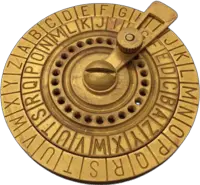Encryption has played a pivotal role in safeguarding sensitive information throughout history. One of the earliest and simplest methods of encryption is the substitution cipher.
This article aims to explain what a substitution cipher is, its types, and a few examples illustrating its working principle.
What is a Substitution Cipher?
A substitution cipher is a method of encryption where each letter in the plaintext is replaced by another letter, symbol, or number. This technique operates on the principle of substituting one unit of data (typically a letter or a group of letters) for another according to a predetermined scheme.
The resulting ciphertext looks entirely different from the original plaintext, making it challenging for unauthorized parties to decipher the message without the key.
Types of Substitution Ciphers
1. Caesar Cipher
Named after Julius Caesar, this cipher involves shifting each letter in the plaintext a certain number of places down or up the alphabet. For instance, with a shift of 3 positions (known as ROT3), ‘A’ would become ‘D’, ‘B’ becomes ‘E’, and so on.
2. Atbash Cipher
The Atbash cipher involves replacing each letter in the plaintext with its corresponding letter in the reverse order of the alphabet. For example, ‘A’ becomes ‘Z’, ‘B’ becomes ‘Y’, and so forth.
3. Monoalphabetic Cipher
This type of cipher uses a fixed substitution for each letter in the plaintext. For instance, in a simple substitution where ‘A’ is always replaced by ‘Q’, ‘B’ by ‘Z’, and so on, the substitution remains constant throughout the encryption process.
How Substitution Ciphers Work
Substitution ciphers work by mapping each letter of the plaintext to a different letter, symbol, or number in the ciphertext. The key, which contains the rules for replacing characters, is essential to decrypt the message. Without the key, breaking the cipher becomes an arduous task.
Examples of Substitution Ciphers
Caesar Cipher Example:
Suppose we have the plaintext: “HELLO” and want to encrypt it using a Caesar cipher with a shift of 3.
- ‘H’ becomes ‘K’
- ‘E’ becomes ‘H’
- ‘L’ becomes ‘O’
- ‘L’ becomes ‘O’
- ‘O’ becomes ‘R’
Therefore, “HELLO” encrypted using a Caesar cipher with a shift of 3 becomes “KHOOR”.
Atbash Cipher Example:
Considering the plaintext: “WORLD” and applying the Atbash cipher:
- ‘W’ becomes ‘D’
- ‘O’ becomes ‘L’
- ‘R’ becomes ‘I’
- ‘L’ becomes ‘O’
- ‘D’ becomes ‘W’
Thus, “WORLD” encrypted using the Atbash cipher becomes “DLIOW”.
